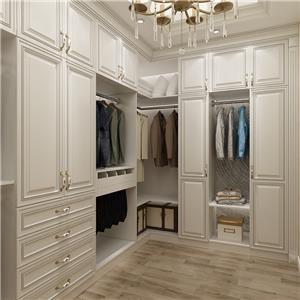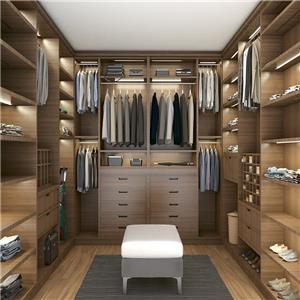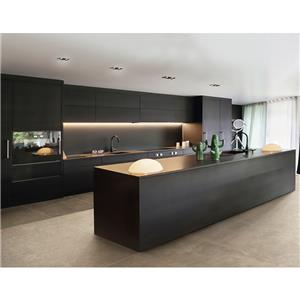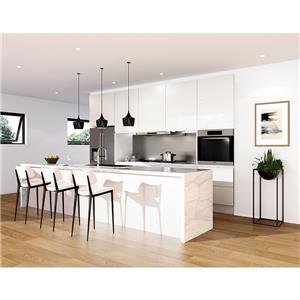Lacquered kitchen cabinets: A Detailed Exploration of Pros & Cons
Introduction
In contemporary kitchen design, painted solid wood cabinets are trending upwards. Homeowners and designers favor their ability to refresh spaces with bold colors or neutral tones, creating a clean, modern aesthetic. Painted cabinets offer versatility, concealing natural wood variations, and complementing various design styles, from minimalist to eclectic, making them a popular choice in today's kitchens.
Painting solid wood cabinets is a transformative technique that revitalizes kitchen aesthetics without replacing them. By coating cabinetry in a fresh hue, it instantly updates the room's style, from traditional to contemporary. This cost-effective solution allows for personalization, hides imperfections, and adds durability with proper priming and finishing coats, making it a favored method in kitchen renovations.
Balancing aesthetics and functionality in decision-making for kitchen cabinets is paramount. Aesthetics dictate the visual appeal and atmosphere of the space, influencing the overall design theme and homeowner satisfaction. Functionality ensures cabinets meet storage needs, are easy to use, and stand up to daily wear, thus preserving the kitchen's efficiency and longevity. Striking this balance results in a kitchen that is not only visually pleasing but also serves its purpose effectively, enhancing the value and enjoyment of the home.
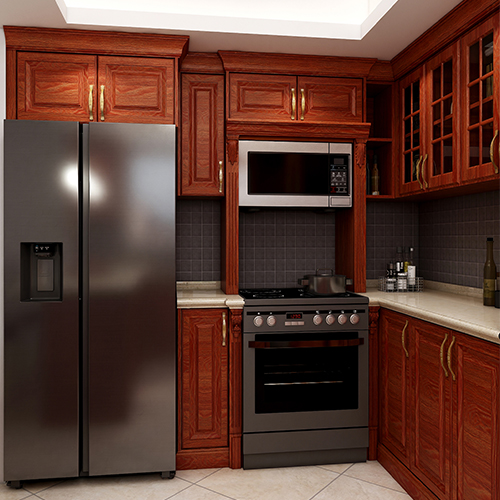
Section 1: Advantages of Painted Kitchen Cabinets
1. Versatility in Design
With custom painting options, solid wood cabinets offer unlimited color choices, enabling homeowners to perfectly match or creatively contrast any decor style. From bold, statement hues that define modern spaces to subtle, timeless tones for traditional settings, the color palette is boundless, ensuring a personalized touch that elevates kitchen design to reflect individual tastes and preferences.
Painting solid wood cabinets presents a cost-effective solution to breathe new life into kitchen design. By refreshing cabinet colors, one can achieve a transformed, updated look without the expense and hassle of full cabinet replacement. This approach accommodates evolving style preferences, from trendy to classic, enhancing the room's aesthetic appeal while preserving the inherent value of solid wood craftsmanship.
Solid wood cabinets provide a canvas for creative finishes, unlocking design versatility. Matte finishes impart a modern, understated elegance, while glossy coatings add a touch of sophistication and reflectivity. Distressed finishes introduce a rustic, vintage charm, infusing character and a sense of history. These varied options cater to diverse aesthetic preferences, enabling individualized design that elevates the kitchen's ambiance.
2. Cost-Effectiveness
Opting to paint or refinish solid wood cabinets is a significantly more affordable alternative to complete cabinet replacement. By revitalizing the existing structure with a fresh coat or new finish, homeowners can achieve a visually renewed kitchen at a fraction of the cost, making it an economically savvy choice for those seeking a budget-friendly makeover without compromising on style or quality.
Updating the look of solid wood cabinets through painting or refinishing can notably boost a home's resale value. A refreshed cabinet appearance instantly modernizes the kitchen, which is a key selling point for potential buyers. This cost-effective renovation strategy not only enhances aesthetic appeal but also signals well-maintained and updated interiors, thereby increasing the attractiveness and market value of the property.
For homeowners with a DIY spirit, painting solid wood cabinets is a budget-friendly project that can dramatically transform kitchen aesthetics. With careful preparation, the right materials, and some elbow grease, one can achieve professional-looking results at a fraction of the cost of hiring experts. This hands-on approach rewards with a sense of accomplishment and significant savings, making it an appealing choice for the DIY enthusiast.

3. Easy to Update
Painting solid wood cabinets offers the flexibility to easily adapt to evolving design trends. As color preferences and interior styles shift over time, cabinets can be repainted to stay current, injecting new life into the space without major renovations. This adaptability ensures your kitchen remains stylish, reflecting the latest design aesthetics, and sustains a fresh and updated atmosphere effortlessly.
Repainting solid wood cabinets is an effective strategy for camouflaging imperfections and signs of wear, such as scratches, dents, or water marks. A well-executed paint job not only revives the cabinets' appearance but also acts as a cosmetic repair, extending their lifespan and giving them a like-new finish. This approach is especially valuable for restoring cherished cabinets or revitalizing an older kitchen without the need for replacements.
Painting solid wood cabinets empowers homeowners to make seasonal or mood-inspired transformations effortlessly. Whether it's adopting warmer tones for cozy winters or cooler hues mirroring the freshness of spring, a change in cabinet color can instantly refresh the kitchen's vibe. This versatility enables interiors to reflect personal styles and changing moods, creating a dynamic living space that evolves with the homeowner's preferences and the shifting seasons.
4. Enhanced Light Reflection
Introducing lighter paint colors to solid wood cabinets can dramatically brighten a dark or poorly lit kitchen. Reflective hues, such as soft whites or pastels, enhance natural and artificial light, creating an illusion of spaciousness and airiness. This simple yet impactful modification transforms the kitchen into a welcoming, well-lit hub, improving both the aesthetic appeal and the functionality of the space.
Using reflective or high-gloss paint finishes on solid wood cabinets can visually expand smaller kitchen spaces. The light-reflecting properties of these surfaces bounce illumination around the room, creating an illusion of depth and openness. This optical effect not only enhances the perception of space but also adds a touch of modern elegance, making compact kitchens feel more inviting and spacious.
Improved illumination, achieved through strategic cabinet painting or refinishing, plays a pivotal role in enhancing a kitchen's ambiance. Light-colored and reflective surfaces maximize available light, creating a warm and inviting atmosphere. This not only uplifts the mood but also optimizes visibility for cooking and dining, turning the kitchen into a well-lit, comfortable gathering place for family and friends.
Section 2: Disadvantages of Painted Kitchen Cabinets
1. Maintenance and Durability
While painted solid wood cabinets offer aesthetic versatility, they can be susceptible to chipping, scratching, and peeling over time, especially in high-traffic or heavy-use areas. Regular maintenance, careful handling, and selecting quality paint and primer can mitigate these risks, ensuring the longevity and appeal of the cabinets. It's important to weigh this potential downside against the transformative benefits of painting when considering a kitchen update.
Painted solid wood cabinets demand ongoing care, including occasional touch-ups and eventual repainting to maintain their appearance. Exposure to daily wear, cleaning, and environmental factors can lead to fading, chipping, or damage that necessitates refinishing. Factoring in this long-term commitment is essential when deciding to paint cabinets, as it influences both the initial investment and the cabinet's lifetime cost.
In bustling, high-traffic kitchens, painted solid wood cabinets may exhibit signs of wear faster than in less frequently used spaces. Frequent opening, closing, and accidental knocks can lead to quicker chipping or scratching of the paint finish. For such environments, selecting durable paint, applying protective coatings, and routine maintenance become even more critical to preserving the cabinets' appeal and integrity over the years.
2. Preparation and Application Process
Achieving a flawless painted finish on solid wood cabinets requires meticulous preparation, which is labor-intensive. This includes thoroughly cleaning surfaces to remove dirt and oils, sanding to smooth out imperfections and promote paint adhesion, and applying a primer to ensure even coverage and longevity of the paint. Skipping these steps can compromise the final result, underscoring the importance of proper preparation for a successful cabinet painting project.
Painting solid wood cabinets can be a time-consuming endeavor, particularly for DIY enthusiasts. From disassembling and prepping the cabinets to the actual painting process and allowing for adequate drying time between coats, the project demands patience and dedication. Proper planning and realistic time management are crucial to avoid frustration and ensure a quality outcome that justifies the invested effort.
While DIY painting is possible, achieving a truly flawless and long-lasting finish on solid wood cabinets often necessitates professional help. Skilled painters possess the expertise and equipment to execute precise preparations, apply paint evenly, and manage potential complications, ensuring a factory-like finish. Investing in professional services can save time, guarantee quality, and ultimately enhance the cabinets' aesthetic and durability.
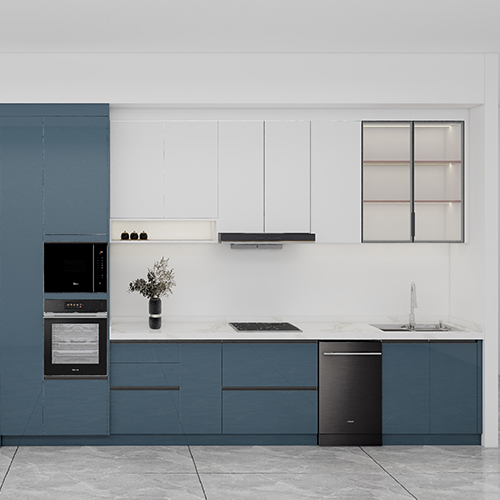
3. Quality of Finish
One of the primary challenges in painting solid wood cabinets is achieving a smooth, consistent finish free from streaks, brush marks, or visible lap lines. This requires skillful technique, proper application tools, and a keen eye for detail. Overcoming this challenge demands patience, practice, or enlisting a professional to ensure the final result complements the cabinet's elegance and enhances the kitchen's overall appeal.
A common pitfall in painting solid wood cabinets is the potential for visible brush strokes or roller marks, which can mar an otherwise impeccable finish. Careful selection of brushes and rollers, proper paint viscosity, and a steady hand are vital to minimize these imperfections. Specialized techniques, such as back-rolling or using spray equipment, can further reduce this risk and yield a more professional, seamless look.
The quality of paint and the precision of its application are paramount in determining the final outcome of painted solid wood cabinets. Using premium paint ensures better coverage, durability, and color retention. Expert application techniques prevent issues like drips, runs, and unevenness, resulting in a refined, uniform appearance that enhances the beauty and value of the cabinets. Cutting corners on paint quality or application can lead to disappointing, short-lived results.
4. Potential for Color Fading
Solid wood cabinets painted with colors susceptible to UV light can experience fading over time when exposed to direct sunlight. This gradual color loss can alter the intended aesthetic and necessitate repainting. To mitigate fading, choose paint with built-in UV inhibitors, use window treatments to filter sunlight, or opt for fade-resistant paint formulations, preserving the cabinets' vibrancy and longevity.
Certain types of paint, particularly oil-based or lower-quality latex, can yellow over time, especially when used in darker shades. This can be particularly noticeable on white or light-colored solid wood cabinets, altering their intended appearance. To avoid yellowing, select high-quality, acrylic or latex paints with minimal or no VOCs, designed to resist discoloration, ensuring cabinets retain their true hues for years to come.
Touching up painted solid wood cabinets can prove challenging due to the difficulty in precisely color matching the original paint. Factors like fading, sheen inconsistencies, and variations between paint batches can make a seamless touch-up nearly impossible. Keeping a record of the exact paint brand, color code, and finish used, along with storing a small amount of leftover paint, simplifies future touch-ups and maintains the cabinets' uniform appearance.

Section 3: Factors to Consider Before Painting Kitchen Cabinets
When painting cabinets, it's crucial to consider the material compatibility of the substrate. Solid wood, Medium-Density Fiberboard (MDF), and laminate each have unique requirements. Solid wood is generally the most forgiving, accepting a wide range of paints; MDF requires careful sealing before painting to prevent swelling; while laminate may need special bonding primers for paint adherence. Understanding these nuances ensures a successful and lasting paint job.
Before painting solid wood cabinets, a thorough assessment of their current condition is vital. Check for signs of damage, such as water stains, warping, or loose joints, which may need repair prior to painting. Additionally, consider the type and condition of the existing finish, as this impacts preparation steps. A well-informed assessment guides the selection of appropriate repair methods and priming strategies, ensuring a high-quality finished product.
Selecting the right paint type is fundamental for solid wood cabinets. Latex paint dries quickly, is low in VOCs, and easy to clean up, making it user-friendly. Oil-based paints offer durability and a smooth finish but take longer to dry and have stronger odors. Enamel paints, either oil or water-based, provide a hard, washable surface ideal for cabinets. The choice depends on the desired finish, project timeline, and environmental considerations.
Budget and time constraints are pivotal factors in any cabinet painting project. High-quality materials and professional services can elevate results but also increase costs. DIY may save money but demands more personal time. Setting realistic expectations based on available resources is crucial. Factor in all expenses (materials, tools, possible repairs) and estimate the time needed for prep work, painting, and drying to make informed decisions.
Section 4: Alternatives to Painting
Staining solid wood cabinets offers a way to enhance the natural wood grain while preserving a more organic aesthetic. Stains come in various hues, from light to dark, allowing customization to match decorative style or to highlight the beauty of wood grain. Proper sanding, selection of compatible stain, and careful application are essential for an even, attractive finish that highlights the wood's unique characteristics, providing a timeless appeal.
Refacing cabinets involves covering the exposed frames with new veneer or laminates, and replacing doors and drawer fronts for a complete transformation. This option modernizes the look without the expense of full replacement, offering versatile design choices. It's particularly beneficial when the cabinet boxes are structurally sound but the exterior appears dated. Refacing can be a cost-effective solution for a kitchen makeover within set timelines and budgets.
When cabinets are severely damaged, outdated, or not worth refinishing, complete replacement offers a fresh start. This allows customization of layout, design, and materials, including upgrading to newer features. Though more costly and invasive, it addresses structural issues and modernizes the kitchen's functionality and aesthetics comprehensively. Careful planning and budgeting are crucial for a successful renovation project.
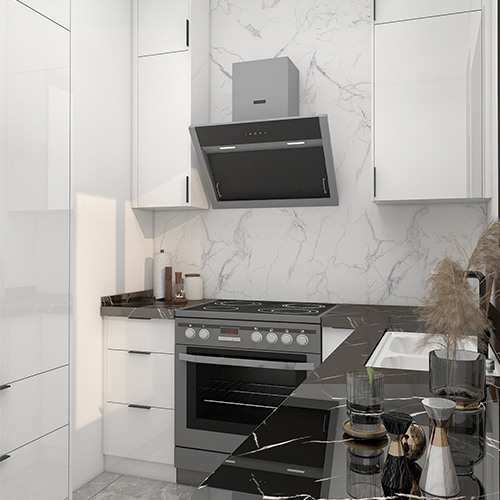
Section 5: Best Practices for Painting Kitchen Cabinets
Preparation includes cleaning and lightly sanding surfaces. Priming with a wood primer ensures better paint adhesion. Painting follows, applying 2-3 thin, even coats of a high-quality cabinet paint, allowing each coat to dry. Finally, seal with a clear topcoat for durability and a smooth finish, enhancing resistance to scratches and stains.
Invest in quality tools for a professional finish: sandpaper or electric sander, tack cloth, primer, paintbrushes or a paint sprayer, painter's tape, drop cloths, cabinet paint, and a clear sealer. Don't forget safety gear like goggles,masks, and gloves. High-quality materials ensure better results and longevity of the comprehensive reform work.
Key tips include thorough prep work, using a primer, applying paint in thin layers, sanding lightly between coats, and finishing with a clear topcoat. Employing a paint sprayer can deliver a smooth, even finish. Use quality brushes or rollers, and maintain a steady hand. Take time for accurate cutting in around edges. Adequate ventilation and patience are essential for a polished outcome.
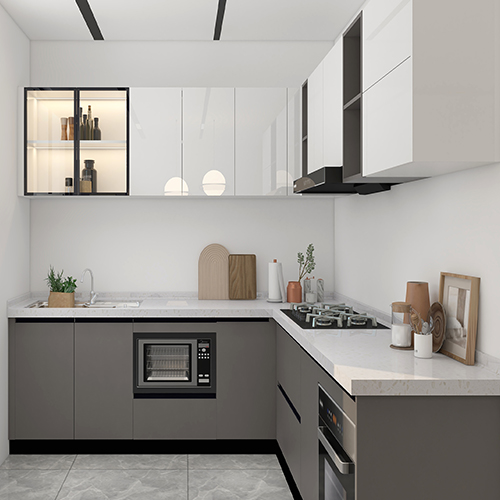
Conclusion
Advantages: Cost-effective compared to replacement, transforms kitchen aesthetics, allows color customization, enhances resale value, and covers imperfections.
Disadvantages: Requires diligent preparation and can be time-consuming, prone to chipping and wear, color matching for touch-ups is tricky, and sunlight may cause fading. Quality of paint and application directly affect the final effect.
Embarking on a cabinet painting project demands thorough planning and realistic expectations. Considering factors like the cabinets' current state, desired outcome, available budget, and personal time commitment is paramount. Weighing the advantages against the potential drawbacks, and preparing for the task's scope ensures a satisfying and lasting renovation that enhances your kitchen's beauty and functionality.
A meticulously executed cabinet painting project can dramatically transform your space, offering a cost-effective alternative to a full kitchen remodel. By carefully selecting the right paint, primer, and finish, you can achieve a high-end look without the hefty price tag, thereby maximizing both aesthetic appeal and budget efficiency.
Before diving into a cabinet painting endeavor, it's essential to align your personal preferences, lifestyle needs, and the realities of the project. Carefully weigh the transformative power and cost savings against the required effort, maintenance, and potential limitations. Ultimately, a well-informed decision tailored to your unique situation paves the way for a kitchen that beautifully reflects your taste and functions seamlessly for years to come.
Paint holds remarkable transformative power in kitchen renovations, breathing new life into tired spaces with a fresh palette. It's a testament to the notion that sometimes, the simplest changes yield the most profound effects. By thoughtfully considering the process and embracing the possibilities, a coat of paint can elevate your kitchen from ordinary to extraordinary, all while respecting your budget and design aspirations.
Hanse hot sale kitchen cabinets:

Acrylic Kitchen Cabinet
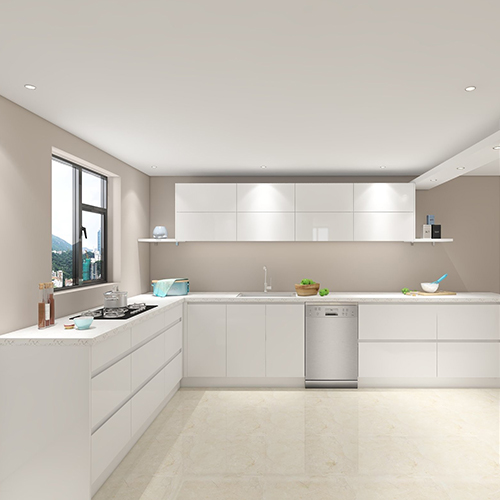
Glass Kitchen Cabinet
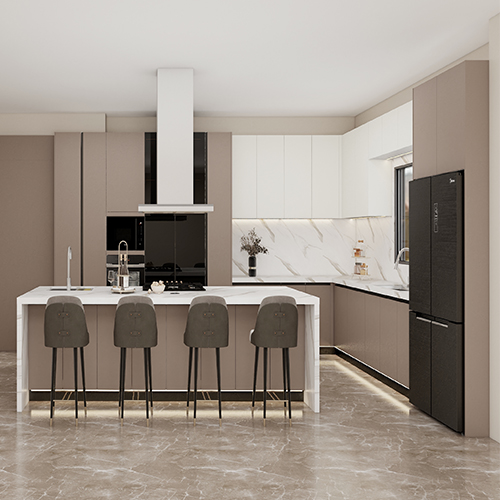
Lacquer Kitchen Cabinet
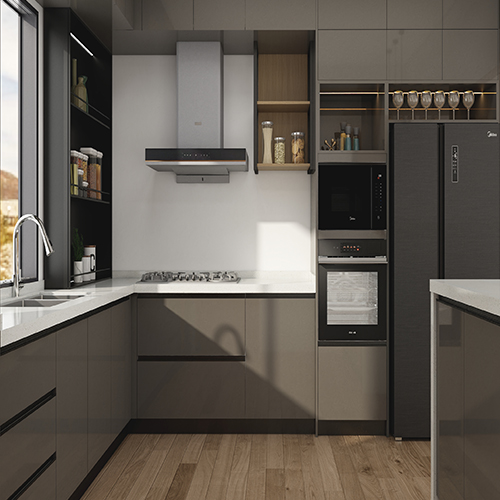
Melamine Kitchen Cabinet
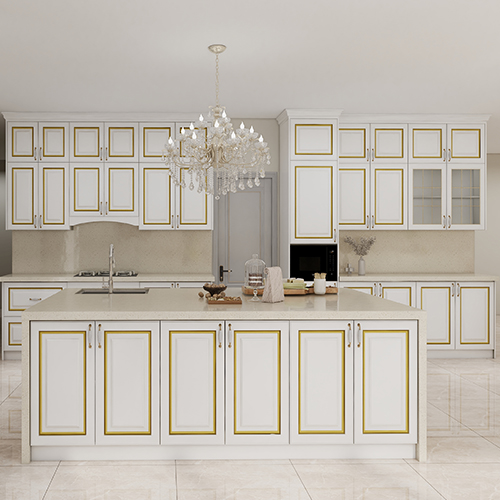
PVC Kitchen Cabinet
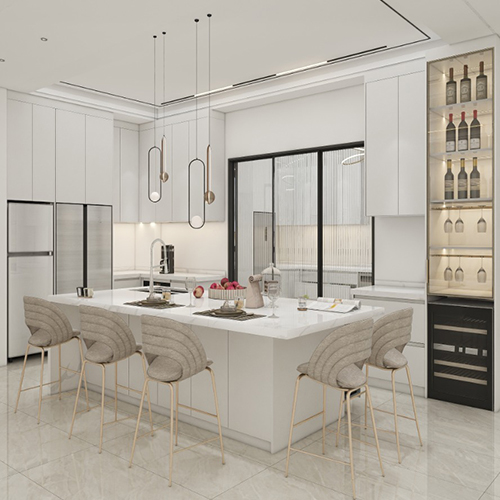
Shaker Kitchen Cabinet
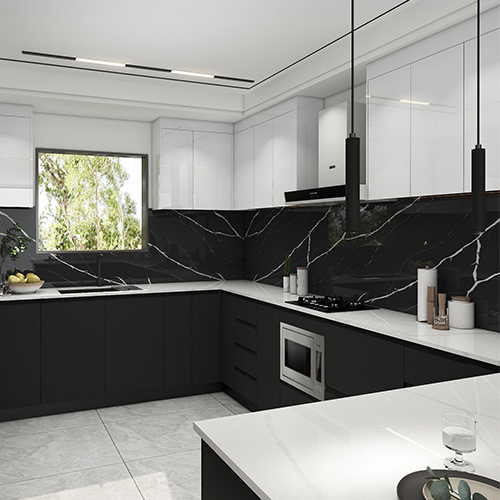
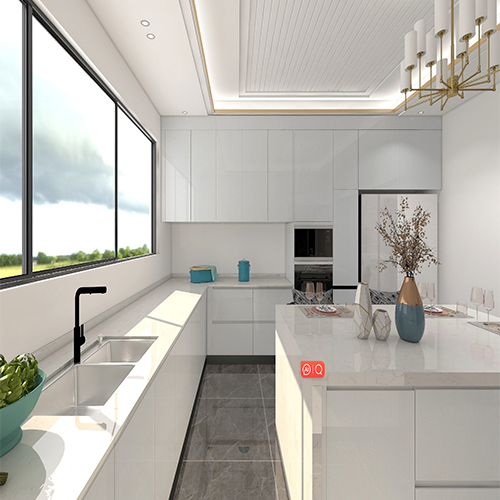
UV Kitchen Cabinet
Frequently Asked Questions:
1. What is a painted board?
Painted board is a woodworking product based on density board, and its surface has been sanded, primed, baked and polished many times. It has many types such as glossy, matte and metallic paint, and is often used in cabinets and doors. It is popular for its rich colors, high gloss, easy cleaning and maintenance, and good waterproof performance.
2. How to distinguish between ordinary paint and piano paint on cabinets?
Ordinary paint has bright colors and a slightly raised surface; piano paint has a soft and delicate color, a mirror-smooth surface, higher hardness, more scratch resistance, and strong reflectivity under light. It has a more refined production process and a thicker paint layer.
3. How to avoid the aging problem of glass glue in painted cabinets?
Methods to prevent the aging of the glass glue of painted cabinets include: keeping the space where the cabinets are located well ventilated and reducing moisture; using high-quality glass glue and ensuring correct construction; regularly checking the status of the sealing strips and replacing them in time if they are aged.
Related articles
PVC Kitchen Cabinets: Advantages and Disadvantages

